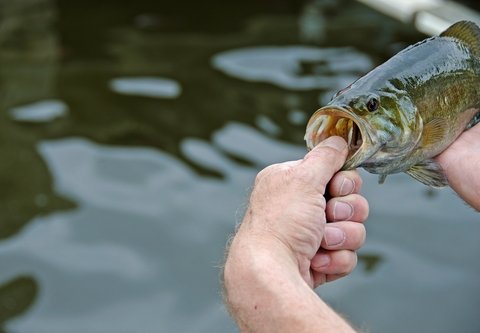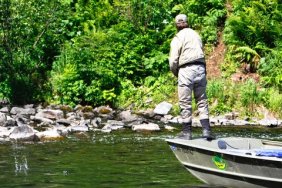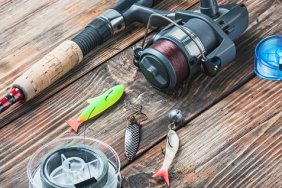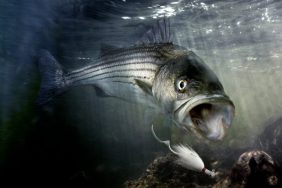There are many ways to catch smallmouth bass, but one of the most challenging and rewarding approaches is with a fly rod.
Fly angling is one of the deadliest methods for taking smallmouth bass and it is a technique that is effective throughout the spring, summer and fall.
Even if you have limited experience with a fly rod, you can start catching smallmouths in no time if you follow a few key tips.
RELATED: Fly Fishing Tips for Largemouth Bass
Tackle
There is no set rule on the size of the fly rod for taking smallmouths, but a good choice is a 9-foot, 7 wt. rod. It has the length to make long casts and will provide more backbone when fighting feisty smallmouths.
Ideally, you should carry spools with two different types of line. The first should be a floating, weight-forward line, which can be used for top-water flies and for shallow water. The second type of line should be a sinking tip, which can be used for deeper water.
Your leader should be 2x or 3x, with a length of at least 9 feet. A leader with strike indicators will be helpful in detecting hits.
RELATED: How to Select the Right Fly Fishing Line
Flies
A wide variety of flies will work for smallmouth bass, including mayfly imitations, poppers, grasshoppers, nymphs, minnow imitations and crayfish imitations. Some of the best include a sneaky Pete, woolly bugger, Clouser minnow and muddler minnow, but there are literally dozens upon dozens of flies that will take smallmouth bass.
RELATED: Top 10 Trout Flies
The key to finding the right fly is to identify what the fish are feeding on and experiment with flies to find the best choice on a given day.
Presentation
The presentation when fly fishing for smallmouths depends on the type of fly you are using and the type of water you are fishing.
If you are fishing a stream or creek, your approach is similar to fly fishing for trout. Drifting flies with the current is the best approach because smallmouths will be looking for food carried toward them by the current.
Watch for insect hatches and check the stream bottom for the types of nymphs that are present in the stream. You can add movement to minnow, leech and crayfish imitations by stripping the line toward you.
RELATED: 4 Fly Fishing Essentials You Can’t Leave Behind
When fishing lakes, your approach is going to be a bit different. Poppers are especially effective on lakes. When fishing with surface flies, the key is to be patient. Let your fly sit still for extended periods (one or two minutes). It often takes a smallmouth a while to decide if it wants to hit surface baits. Other times, movement will cause fish to strike. Try giving your line twitches or make a popper pop. Try a variety of approaches to induce a strike.
Fishing flies below the surface takes a bit more effort. Give the fly twitches or jerks. In the case of minnow, leech or crayfish imitations, strip the line toward you with a smooth motion. For nymphs, use short, quick movements or slowly raise your rod tip to pull the fly upward.
© Maria Dryfhout | Dreamstime.com – Fisherman with smallmouth bass








